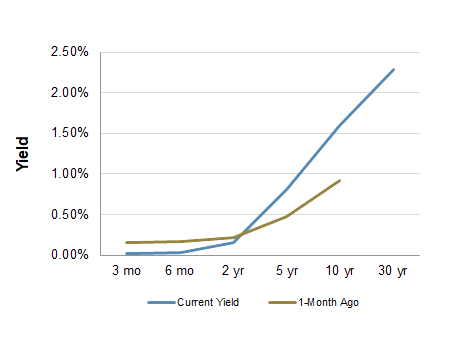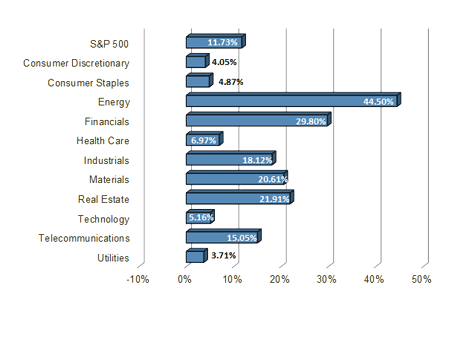Chief Economist Scott Brown discusses the latest market data.
Nonfarm payrolls rose by 559,000 in the initial estimate for May (+973,000 before seasonal adjustment), down 7.6 million (-5.0%) from February 2020 (although we would have added more than two million jobs if not for the pandemic, leaving us about 9.6 million below the pre-pandemic trend). Leisure and hospitality added 293,000 (still down 15% from February 2020). The three-month average payroll gain was 541,000. The unemployment rate fell to 5.8% (from 6.1% in April), due partly to a drop in labor force participation.
The Fed Beige Book reported that economic growth was “moderate,” although “somewhat faster” than the previous assessment. Firms reported difficulties in hiring, especially for low-wage workers, truck drivers and skilled tradespeople, but wage increases were described as “moderate” overall. Input price pressures increased further, which “some” businesses could pass along. The ISM Manufacturing Index rose to 61.2 in May (vs. 60.7 in April), reflecting faster growth in new orders and production. The ISM Services Index rose to a record 64.0 in May (vs. 62.7 in April), with faster growth in business activity and new orders. Both reports indicated longer supplier delivery times, rising order backlogs and increased input price pressures. Unit motor vehicle sales fell 9.5% in May, reflecting production constraints (semiconductor shortage).
Next week, the economic calendar thins out but investors will pay close attention to the May Consumer Price Index. Base effects (a rebound from the low levels of a year ago) will continue (the CPI rose 0.1% y/y in April 2020 and is expected to be up about 4.5% y/y in May 2021). Bottleneck pressures and materials shortages are more likely to show up in the PPI, but some may add to the CPI in the near term.
Indices
| Last | Last Week | YTD return % | |
|---|---|---|---|
| DJIA | 34577.04 | 34464.64 | 12.97% |
| NASDAQ | 13614.51 | 13736.28 | 5.63% |
| S&P 500 | 4192.85 | 4200.88 | 11.63% |
| MSCI EAFE | 2295.82 | 2295.82 | 6.91% |
| Russell 2000 | 2279.25 | 2273.07 | 15.41% |
Consumer Money Rates
| Last | 1 year ago | |
|---|---|---|
| Prime Rate | 3.25 | 3.25 |
| Fed Funds | 0.06 | 0.05 |
| 30-year mortgage | 3.13 | 3.05 |
Currencies
| Last | 1 year ago | |
|---|---|---|
| Dollars per British Pound | 1.4187 | 1.260 |
| Dollars per Euro | 1.2169 | 1.338 |
| Japanese Yen per Dollar | 109.62 | 109.15 |
| Canadian Dollars per Dollar | 1.208 | 1.350 |
| Mexican Peso per Dollar | 20.011 | 21.917 |
Commodities
| Last | 1 year ago | |
|---|---|---|
| Crude Oil | 69.43 | 37.41 |
| Gold | 1873.30 | 1727.40 |
Bond Rates
| Last | 1 month ago | |
|---|---|---|
| 2-year treasury | 0.15 | 0.22 |
| 10-year treasury | 1.60 | 0.92 |
| 10-year municipal (TEY) | 1.47 | 1.31 |
Treasury Yield Curve – 06/04/2021

As of close of business 06/03/2021
S&P Sector Performance (YTD) – 06/04/2021

Economic Calendar
| June 8 | — | Small Business Optimism (May) |
| — | Trade Balance (April) | |
| June 10 | — | Jobless Claims (week ending June 5) |
| — | Consumer Price Index (May) | |
| June 11 | — | UM Consumer Sentiment (Mid-June) |
| June 15 | — | Producer Price Index (May) |
| — | Retail Sales (May) | |
| — | Industrial Production (May) | |
| — | Homebuilder Sentiment (June) | |
| June 16 | — | Input Prices (April) |
| — | Building Permits, Housing Starts (May) | |
| — | FOMC Policy Decision | |
| July | — | Employment Report (June) |
| July 28 | — | FOMC Policy Decision |
All expressions of opinion reflect the judgment of the Research Department of Raymond James & Associates, Inc. and are subject to change. There is no assurance any of the forecasts mentioned will occur or that any trends mentioned will continue in the future. Investing involves risks including the possible loss of capital. Past performance is not a guarantee of future results. International investing is subject to additional risks such as currency fluctuations, different financial accounting standards by country, and possible political and economic risks, which may be greater in emerging markets. While interest on municipal bonds is generally exempt from federal income tax, it may be subject to the federal alternative minimum tax, and state or local taxes. In addition, certain municipal bonds (such as Build America Bonds) are issued without a federal tax exemption, which subjects the related interest income to federal income tax. Municipal bonds may be subject to capital gains taxes if sold or redeemed at a profit. Taxable Equivalent Yield (TEY) assumes a 35% tax rate.
The Dow Jones Industrial Average is an unmanaged index of 30 widely held stocks. The NASDAQ Composite Index is an unmanaged index of all common stocks listed on the NASDAQ National Stock Market. The S&P 500 is an unmanaged index of 500 widely held stocks. The MSCI EAFE (Europe, Australia, Far East) index is an unmanaged index that is generally considered representative of the international stock market. The Russell 2000 index is an unmanaged index of small cap securities which generally involve greater risks. An investment cannot be made directly in these indexes. The performance noted does not include fees or charges, which would reduce an investor’s returns. U.S. government bonds and treasury bills are guaranteed by the US government and, if held to maturity, offer a fixed rate of return and guaranteed principal value. U.S. government bonds are issued and guaranteed as to the timely payment of principal and interest by the federal government. Treasury bills are certificates reflecting short-term (less than one year) obligations of the U.S. government.
Commodities trading is generally considered speculative because of the significant potential for investment loss. Markets for commodities are likely to be volatile and there may be sharp price fluctuations even during periods when prices overall are rising. Specific sector investing can be subject to different and greater risks than more diversified investments. Gross Domestic Product (GDP) is the annual total market value of all final goods and services produced domestically by the U.S. The federal funds rate (“Fed Funds”) is the interest rate at which banks and credit unions lend reserve balances to other depository institutions overnight. The prime rate is the underlying index for most credit cards, home equity loans and lines of credit, auto loans, and personal loans. Material prepared by Raymond James for use by financial advisors. Data source: Bloomberg, as of close of business May 27, 2021.
Markets & Investing Members of the Raymond James Investment Strategy Committee share their views on...
Markets & Investing Review the latest Weekly Headings by CIO Larry Adam. Key Takeaways ...
Technology & Innovation Learn about a few simple things you can do to protect your personal information...